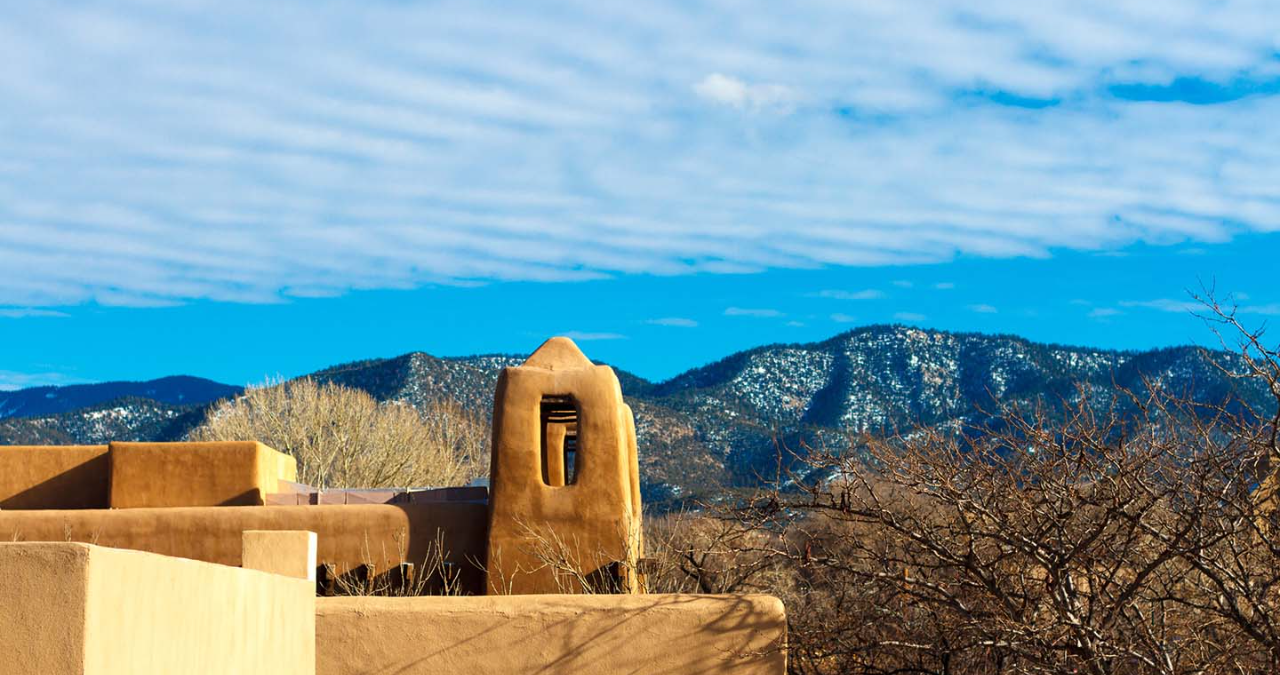Discover everything about Santa Fe weather: seasonal trends, monthly temperatures, local tips, and more. Your ultimate guide to understanding the climate of New Mexico’s capital city.
Santa Fe weather is one of the most diverse and unique in the United States. With its high elevation, four distinct seasons, and a blend of desert and mountain climate characteristics, it’s no wonder visitors and locals alike are fascinated by the atmospheric moods of New Mexico’s enchanting capital. Whether you’re planning a trip, thinking about moving, or just curious, this deep dive into Santa Fe weather will give you everything you need.
The High Desert Climate of Santa Fe
Santa Fe is located at an elevation of about 7,200 feet, which plays a major role in its climate. While many think of New Mexico as hot and arid, Santa Fe offers a more temperate, high-desert experience. The air is thinner, the temperatures are cooler, and the skies are famously clear. In fact, the city boasts around 300 sunny days each year.
This unique climate results in large daily temperature swings. It’s not uncommon to experience a chilly morning followed by a warm afternoon. This diurnal temperature variation is one of the defining traits of Santa Fe weather. It’s a good idea to dress in layers no matter the season.
Humidity levels are generally low throughout the year, which makes even the warmer months more tolerable. However, this dry climate can also lead to skin and respiratory dryness, so hydration is key when visiting or living here.
Seasonal Breakdown: A Year-Round Look at Santa Fe Weather
Spring in Santa Fe
Spring is a time of awakening in Santa Fe. The temperatures begin to warm, but snow in the mountains is still visible and occasionally falls in the early months. March and April can be unpredictable, with wind being a notable factor. Spring winds can gust up to 40 mph or more, stirring up dust and pollen.
By May, temperatures are typically pleasant, ranging from the high 50s to mid-70s. It’s a great time to enjoy hiking and outdoor events before the summer heat rolls in. Spring also signals the start of Santa Fe’s renowned art and culture season, drawing tourists and locals to festivals and markets.
Summer in Santa Fe
Summer in Santa Fe is warm, but rarely oppressively hot thanks to the city’s elevation. Daytime highs often sit in the 80s, and it’s rare to see temperatures climb into the 90s. The heat is dry, which means it doesn’t feel as uncomfortable as humid climates.
The real story of summer is the monsoon season. From July through early September, Santa Fe experiences short but intense afternoon thunderstorms. These storms typically roll in quickly and depart just as fast, leaving behind dramatic skies and cooler air. The monsoon season is an essential part of the local ecology and provides much-needed moisture to the landscape.
Fall in Santa Fe
Fall is arguably the best time to visit Santa Fe. The weather is crisp and clear, with daytime highs ranging from the 60s to low 80s. Evenings become cool and perfect for a cozy sweater. The fall foliage in and around Santa Fe is breathtaking, especially in the nearby Sangre de Cristo Mountains.
This is also when the famous Santa Fe Indian Market and the Albuquerque International Balloon Fiesta take place, making it a vibrant and culturally rich time of year. The skies are often a brilliant blue, and the sunlight takes on a golden hue that photographers adore.
Winter in Santa Fe
Winter brings snow to Santa Fe, especially in the surrounding mountains. While the city itself doesn’t see excessive snowfall, it does get a decent amount—enough to enjoy without the stress of severe winter weather. Average highs in winter range from the mid-30s to upper 40s, but nights can dip into the teens.
Skiing and snowboarding are popular at nearby Ski Santa Fe, which offers stunning views and well-groomed trails. Winter is also a quiet, peaceful time in the city, with fewer tourists and cozy adobe buildings lit up with farolitos during the holidays.
Santa Fe Weather by Month
| Month | Avg High (F) | Avg Low (F) | Precipitation (in) |
|---|---|---|---|
| January | 41 | 18 | 0.6 |
| February | 46 | 21 | 0.5 |
| March | 53 | 26 | 0.7 |
| April | 61 | 32 | 0.6 |
| May | 70 | 40 | 0.7 |
| June | 80 | 49 | 0.6 |
| July | 85 | 55 | 1.6 |
| August | 82 | 53 | 2.0 |
| September | 76 | 47 | 1.3 |
| October | 65 | 37 | 1.0 |
| November | 52 | 26 | 0.6 |
| December | 42 | 20 | 0.7 |
Outdoor Activities and Santa Fe Weather

Santa Fe weather plays a huge role in how locals and tourists enjoy the outdoors. With so many clear days, it’s easy to plan hikes, art walks, and patio lunches without much worry. The moderate climate makes Santa Fe a year-round destination.
In the spring and fall, hiking is especially popular. Trails like Atalaya Mountain and Dale Ball offer sweeping views and refreshing breezes. Summer’s warm weather is perfect for exploring museums and enjoying ice cream on the Plaza.
Winter sports enthusiasts flock to Ski Santa Fe, but winter is also a great time for hot springs and quiet mountain getaways. No matter the season, there’s always something to do—and Santa Fe weather is usually on your side.
How to Dress for Santa Fe Weather
Because of the city’s elevation and temperature swings, layering is essential. Mornings and evenings can be cold, even in the summer, so it’s smart to carry a light jacket or sweater.
Sunscreen is a must year-round. The high altitude increases UV exposure, so protecting your skin is critical. A wide-brimmed hat, sunglasses, and lip balm are also good ideas.
Winters call for a warm coat, especially at night. Snow boots may not be necessary in the city, but they can be useful if you plan to head into the mountains or go skiing.
Health and Comfort in Santa Fe’s Climate
One of the unique aspects of Santa Fe weather is its impact on health and comfort. The dry air can be tough on those not used to it, leading to dry skin, bloody noses, and dehydration.
Staying hydrated, using a humidifier indoors, and applying moisturizing lotion can help ease these issues. Altitude sickness is also a concern for new visitors, especially those coming from sea level. It’s important to take it easy for the first day or two and drink plenty of fluids.
Allergies can also flare up in Santa Fe, particularly during spring and summer when pollen levels are higher. However, many people report relief from mold and mildew allergies thanks to the arid conditions.
Local Perspectives on Santa Fe Weather
Ask any Santa Fean about the weather, and you’ll get a smile and a shrug. People here are used to the quirks—the quick changes, the dry air, the breathtaking sunsets after a monsoon storm.
Locals appreciate the fact that even when it snows, the sun usually shines the next day. There’s a rhythm to the seasons that shapes daily life, from when you garden to when you plan that hike up into the mountains.
“It might be chilly in the morning, but by noon, you’ll be shedding layers,” is something you’ll hear often. And they’re right. Santa Fe weather keeps you on your toes, but in the best possible way.
Best Time to Visit Santa Fe Based on Weather
While Santa Fe is a year-round destination, many agree that fall is the best time to visit. The weather is mild, the foliage is stunning, and cultural events are in full swing.
Spring is another excellent choice if you want fewer crowds and cool, comfortable weather. Summer offers festivals and long, sunny days, though monsoon season adds a bit of unpredictability. Winter, while cold, is beautiful and serene—especially if you enjoy snow sports.
No matter when you come, you’ll find that Santa Fe weather adds a magical quality to your experience.
FAQs About Santa Fe Weather
What is the best time to visit Santa Fe for good weather?
Fall is considered the best time to visit Santa Fe due to its mild temperatures, clear skies, and vibrant cultural events. Spring is another excellent choice for outdoor activities.
Does it snow in Santa Fe?
Yes, Santa Fe receives snow in the winter, especially in the mountains. While the city itself gets moderate snowfall, it’s usually enough for a picturesque experience without major disruption.
How hot does it get in Santa Fe?
Santa Fe rarely experiences extreme heat. Summer highs generally stay in the 80s, with occasional peaks into the low 90s. The dry climate makes it feel more comfortable than humid places.
Is Santa Fe weather good for outdoor activities?
Absolutely. With around 300 sunny days per year and mild seasonal changes, Santa Fe weather is ideal for hiking, skiing, exploring markets, and enjoying the outdoors.
Is Santa Fe weather dry or humid?
Santa Fe has a dry, high-desert climate. Humidity is typically low throughout the year, making the weather more comfortable and reducing the risk of mold and mildew.
Conclusion: Embrace the Magic of Santa Fe Weather
Santa Fe weather is more than just a forecast—it’s a way of life. The city’s blend of sun, snow, wind, and rain creates a dynamic climate that enhances everything from daily routines to once-in-a-lifetime adventures. Whether you’re here for a few days or a few decades, the weather will leave an impression. Pack your layers, drink your water, and get ready to fall in love with the skies of Santa Fe.


